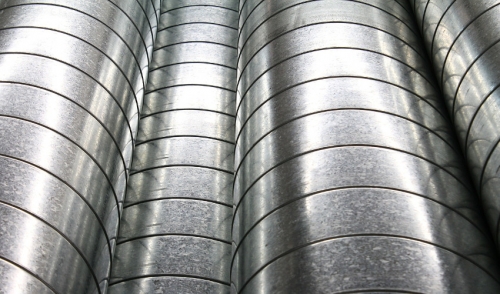
Keeping your Ducts in Order
A common complaint by homeowners who use a forced hot air heating system is that there can be a lot of dust build up. Of course, that is why filters are used in the heating system. But what if you’ve just replaced your filter and still are dealing with more dust than usual? It may be time to lift up a duct vent and take a look.
According to the EPA, there are three main things to look for and you should consider cleaning your ducts if you find any of them:
- The first is the visible presence of mold growth. Not all found residue in your duct work is mold, however. If you find something and wish to be certain, there are labs that will test it for you. Simply obtain a sample by pressing a section of clear tape onto it and peel it off, lifting the material.
- If there is evidence of rodent or insect infestation.
- If there is an excessive amount of dust or debris released into your household through your supply registers.
If you suspect any of these to be possible, simply grab a flashlight, remove a couple vents and take a look inside the duct. If you find anything (or even if you still think there’s something in the places you couldn’t get to) you have to make the next choice:
Pro or No?
Depending on what you find or the complexity of your duct system, you may want to hire a professional. Choose one that will provide a detailed report of the results. Some pros even utilize remote photography to provide verification of the condition inside the ducts.
If you feel like doing it yourself and saving a little money, we’ll show you the basic tools and steps to get the job done right.
Get your tools in order
You’ll need a variety of tools for this job; most of which you probably already own, such as:
- Screwdriver
- Gloves
- Shop Vac
- Duct tape and masking tape
- Plastic wrap
- Tape measure
- Utility knife
- Drill
There are a couple of tools you may not have:
- Duct whip cable. You’ll need to measure the lengths of your ducts throughout your home to choose the proper length of cable.
- Agitation brushes. You also have to measure the diameter of your ducts to choose the proper width brush.
Cleaning
A thorough cleaning includes all duct vents and return air grills. The first part of this job involves removing all of them, so this is a perfect opportunity to let them soak in a large container of soapy water. A large sink, slop sink, or even a plastic storage bin will work for this. On note: if you have any pets that might be curious about what might be in these interesting new holes in the floor, you may want to keep them in a safe place before removing all of the vent covers.
Next, cover all of the open vent holes with a piece of plastic sheeting. Securely fasten it down with masking tape. At this point, it is important to find the most central vent opening in your system. We’re going to use it as the “suction center”, in which you will insert your vacuum. All of the stirred up dust and debris will flow towards it.
Once you’ve determined the best location for the suction center, cut a small hole in the plastic sheeting and insert the end of your vacuum here. Seal around the hose with duct tape.
Now you can begin cleaning at each individual vent. Remove the plastic sheet from your first vent and attach the brush to the whip cable. Attach the other end of the cable to your drill. Insert the brush end into the open vent hole and turn on the vacuum. If you notice the plastic sheets covering the vents getting sucked down, you know that you’ve got a good seal.
At this point, the air from your exposed vent will flow towards the vacuum and when you turn on your drill, the debris stirred up from the brush and cable will be drawn to the vacuum as well. Continue until the whip cable has extended as far as necessary, then retract it, turn off the vacuum and seal the cover back up with the plastic and tape.
Move on to each vent opening and repeat until you’re finished. Once all of the ducts are cleaned, remove all of the plastic and replace the cleaned and dried vent covers.
Your ducts should now be as good as new. Remember to change your system’s air filter and hopefully you’ll enjoy a warm and comfortable (and less dusty!) winter season.
